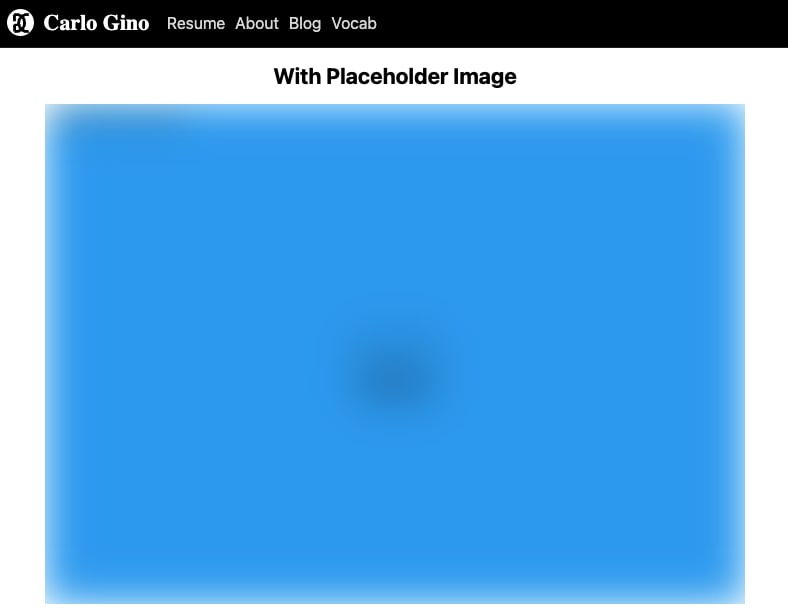90
Handling image loading and error state in Next.js
TL;DR
Check the full code here
next/image provides an easy way to create an image.
import Image from 'next/image'
<Image src="https://i.imgur.com/gf3TZMr.jpeg" alt="Some alt text" />However, we still need to configure some properties to cater to our specific needs, such as:
- A placeholder when loading
- An error placeholder when the image fails to load
The GIF below shows what a user will see for an image loaded using a slow internet connection.

It gives the impression that something is wrong with our app.
Simply adding the placeholder and blurDataURL will do the trick.
<Image
src="https://i.imgur.com/gf3TZMr.jpeg"
placeholder="blur"
blurDataURL="/assets/image-placeholder.png"
/>The code will yield the following result:

There's a brief delay before the placeholder is loaded
because even the placeholder image needs to be fetched from the server.
If we need to make sure that there's an immediate placeholder to the image,
refer to this guide on how to create a dynamic image placeholder
The good thing is that once the placeholder image is loaded, all other images that use the same asset
will display the placeholder immediately.

One possibility is that the user will stare at the placeholder for eternity.

Or this sadder version which shows the alt and much space.

It is not fun to see too much unnecessary space, is it?
We can replace the value of src with the path to error image in the onError callback when an error happens.
const [src, setSrc] = React.useState('https://i.imgur.com/gf3TZMr.jpeg');
<Image
{...props}
src={src}
placeholder="blur"
blurDataURL="/assets/image-placeholder.png"
onError={() => setSrc('/assets/image-error.png')}
/>
I believe it's much better.
To make the behavior easy to replicate, we can create a custom image component.
function CustomImage({alt, ...props}) {
const [src, setSrc] = React.useState(props.src);
return (
<Image
{...props}
src={src}
alt={alt} // To fix lint warning
onError={() => setSrc('/assets/image-error.png')}
placeholder="blur"
blurDataURL="/assets/image-placeholder.png"
/>
);
}When a web application displays many images, it is a good idea to give immediate feedback to the user of what is happening. One way to address this is to use an alternate image to show the current state of an image.

90
